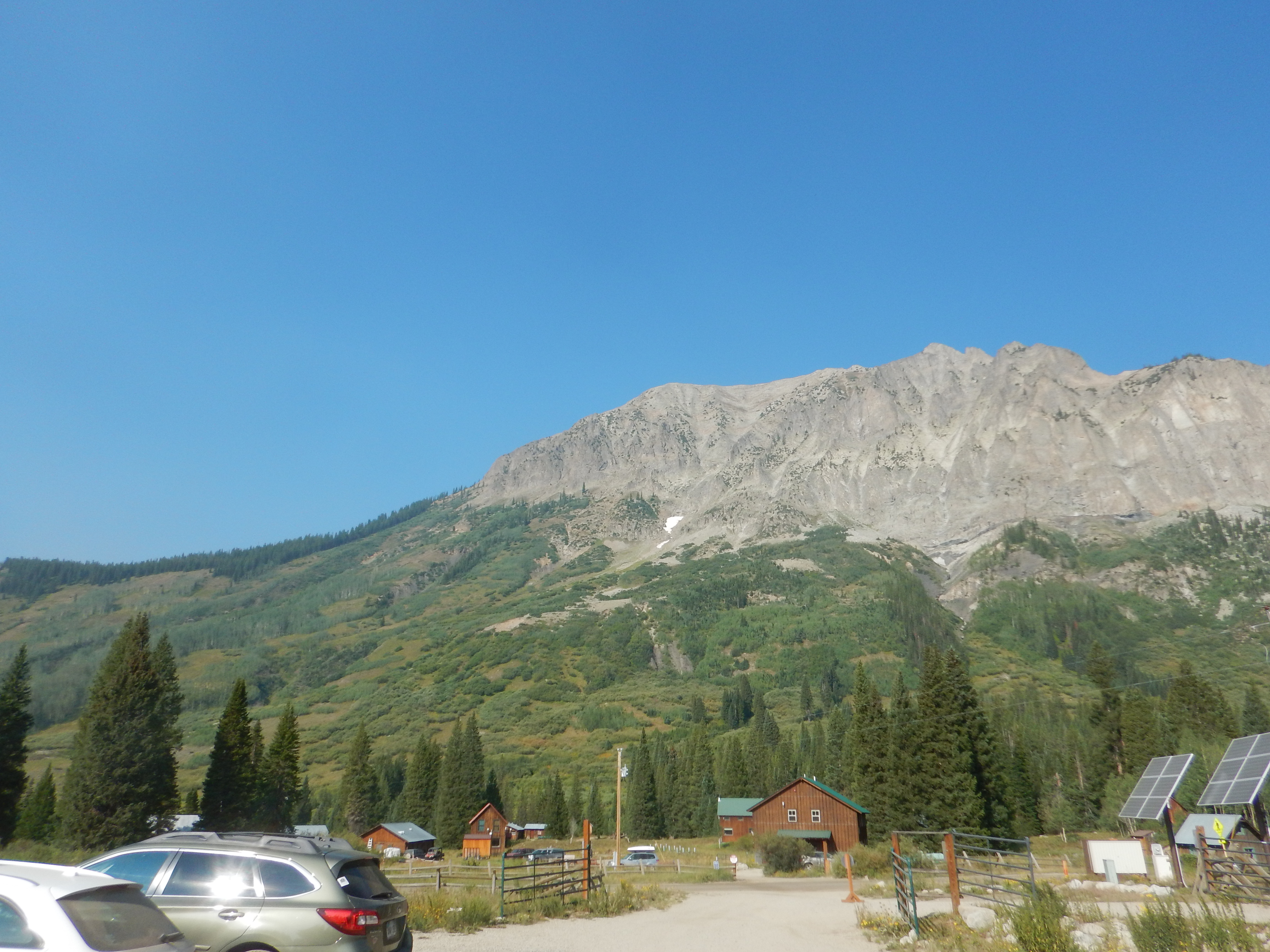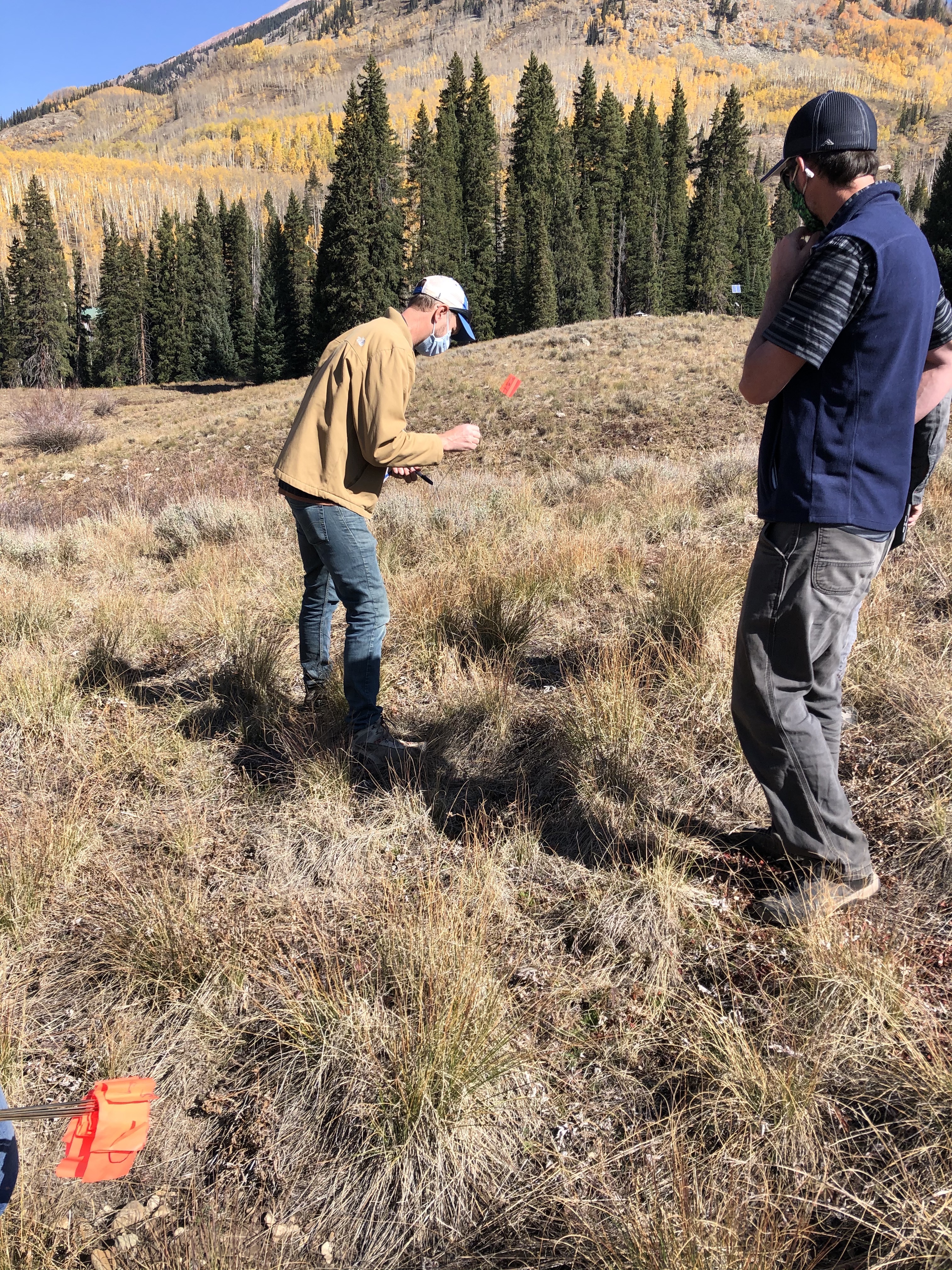Setting a Course for SAIL
Published: 17 November 2020
Editor’s note: Daniel Feldman, the principal investigator for the upcoming Surface Atmosphere Integrated Field Laboratory (SAIL) field campaign in Colorado, sent in this update.

The SAIL campaign is set to begin September 15, 2021, in the Colorado Rockies near Crested Butte. SAIL will deploy the second ARM Mobile Facility (AMF2) and is pursuing a novel approach relative to previous ARM Mobile Facility deployments: It will co-locate AMF2 with existing surface and subsurface measurements as part of the Watershed Function Scientific Focus Area (SFA) in the East River Watershed.
SAIL seeks to quantify and characterize the atmospheric processes that are relevant to mountainous hydrology in midlatitude continental interior locations. It will do so by enabling world-leading atmosphere-through-bedrock observations to inform mountainous hydrological research.
To achieve this observational capability, key members of the SAIL campaign performed two site surveys to identify locations where SAIL instrumentation could be placed to achieve the campaign’s ambitious science goals. These surveys took place August 23–24 and October 7–8, 2020, at the Rocky Mountain Biological Laboratory (RMBL) and Crested Butte Mountain Resort (CBMR).
Safety First
Despite the challenges of performing fieldwork during the COVID-19 era, a small team of key contributors to SAIL developed and followed COVID safety plans to evaluate a number of potential locations.

The team for both site surveys included Dan Feldman, a research scientist at Lawrence Berkeley National Laboratory (LBNL) and the principal investigator of SAIL; Ken Williams, a staff scientist at LBNL and the deputy lead and chief field scientist of the Watershed Function SFA; and Heath Powers, AMF2 site manager from Los Alamos National Laboratory (LANL).
On the first survey, the team gathered initial data on the feasibility of siting both AMF2 instrumentation and a precipitation radar from Colorado State University. Venkatachalam Chandrasekar (Chandra) and Francesc Junyent, the scientific and engineering leads, respectively, on the precipitation radar measurement system, joined the team for this survey.
At the second site survey, John Bilberry, AMF2 SAIL project lead from LANL, and Dave Gochis, a scientist at the National Center for Atmospheric Research, joined for logistics support and to provide guidance on surface flux measurements, respectively.
Site Visit 1, Day 1: August 23, 2020
The survey started with Dan, Ken, Heath, Chandra, and Francesc car-caravaning and meeting up at RMBL’s main campus in Gothic, Colorado. Summer is construction season on the access road to RMBL, but the team met up bright and early, excited to see potential SAIL siting areas. Even though it was late summer, the team was excited to see that there was still a bit of snow on Gothic Mountain.
This team toured potential sites at RMBL, guided by RMBL Science Director Jennifer Reithel; Facilities Director Steve Jennison; and Director of Administration Brett Biebuyck. The RMBL hosts provided key information about site logistics, climatological conditions in the area (especially during winter), and coordination with ongoing research at RMBL.

Ken joined the site survey a little on the late side, as he was introducing Michael Bennet, a U.S. senator for Colorado, to the existing and planned science activities in the East River Watershed, including SAIL and the Watershed Function SFA.
In the afternoon, the team car-caravaned south to tour potential locations, around 6 kilometers south at CBMR, to site the precipitation radar. Mark Voegeli, the director of mountain operations for CBMR, showed the team three potential sites. Two were at the top of a ski lift, and the other was located at an old avalanche control facility that used projectiles from a Howitzer to mitigate avalanche danger.
Site Visit 1, Day 2: August 24, 2020
The team revisited RMBL in Gothic to check on logistics for wintertime support and to evaluate the logistics of siting instruments on a small hill above RMBL, near the Clean Air Status and Trends Network (CASTNET), which has made measurements of aerosols in the area since 1989. The team and RMBL’s director, Ian Billick, also discussed opportunities for synergistic science with RMBL researchers, the ARM/Atmospheric System Research (ASR) scientific community, and the Watershed Function SFA research community.
SAIL Virtual Workshop
After the first survey, the lessons learned about the East River Watershed in general and siting the AMF2 instruments were relayed to the SAIL science team and to the larger scientific community through the 2020 SAIL Virtual Workshop, held September 23–24.
The workshop drew over 130 attendees, including scientists, stakeholders, local agency representatives, and program managers from DOE, the U.S. Geological Survey, and NASA. Discussions focused on science opportunities that the SAIL campaign would enable and provided valuable direction for refining siting selection considerations. This motivated and supported the October site survey, where key members of the SAIL team revisited RMBL.
Site Visit 2, Day 1: October 7, 2020

Heath, John, Ken, and Dan revisited RMBL and, in discussions with RMBL staff, established preliminary coordinates for the locations of specific AMF2 instruments. The team also revisited the potential radar sites at CBMR and made measurements to avoid obstruction of radar observations from vegetation.
Site Visit 2, Day 2: October 8, 2020
The team, now including Dave, met at RMBL to evaluate the feasibility of making surface flux measurements in complex terrain with a deformable surface (e.g., it snows, so the surface can move a lot). A satellite facility 2 kilometers south of Gothic was evaluated for the feasibility of making surface flux and surface meteorology measurements.
What’s Next?
After the two site surveys, there are preliminary plans to site most of the AMF2 instrumentation in Gothic, working in close coordination with RMBL, and to site the precipitation radar system at CBMR. Discussions are ongoing with RMBL and CBMR to finalize plans.
The SAIL campaign team looks forward to the upcoming virtual town hall session on SAIL during the 2020 American Geophysical Union (AGU) Fall Meeting. This town hall is scheduled from 7–8 p.m. Eastern time Tuesday, December 8. The team wants to engage with a broad audience of interested researchers and learn more about how you would like to participate in the campaign.
Also, during the virtual 2021 American Meteorological Society (AMS) Annual Meeting, there will be a joint oral presentation session and a poster session featuring SAIL and related research, both as part of the 35th Conference on Hydrology. Both sessions will be held Monday, January 11, with the joint oral presentation session from 1–2 p.m. and the poster session from 2–3:30 p.m. (times are Eastern). Please check them out if you can!
Keep up with the Atmospheric Observer
Updates on ARM news, events, and opportunities delivered to your inbox
ARM User Profile
ARM welcomes users from all institutions and nations. A free ARM user account is needed to access ARM data.


















